Audi Q4 e-tron vs Jeep Compass - Differences and prices compared
Costs and Efficiency:
Price and efficiency are often the first things buyers look at. Here it becomes clear which model has the long-term edge – whether at the pump, the plug, or in purchase price.
Jeep Compass has a to a small extent advantage in terms of price – it starts at 34200 £, while the Audi Q4 e-tron costs 39600 £. That’s a price difference of around 5357 £.
In terms of energy consumption, the advantage goes to the Audi Q4 e-tron: with 15.90 kWh per 100 km, it’s slightly more efficient than the Jeep Compass with 17.50 kWh. That’s a difference of about 1.60 kWh.
As for range, the Audi Q4 e-tron performs minimal better – achieving up to 554 km, about 54 km more than the Jeep Compass.
Engine and Performance:
Under the bonnet, it becomes clear which model is tuned for sportiness and which one takes the lead when you hit the accelerator.
When it comes to engine power, the Audi Q4 e-tron has a clearly perceptible edge – offering 340 HP compared to 213 HP. That’s roughly 127 HP more horsepower.
In acceleration from 0 to 100 km/h, the Audi Q4 e-tron is decisively quicker – completing the sprint in 5.40 s, while the Jeep Compass takes 8.50 s. That’s about 3.10 s faster.
In terms of top speed, the Jeep Compass performs minimal better – reaching 188 km/h, while the Audi Q4 e-tron tops out at 180 km/h. The difference is around 8 km/h.
There’s also a difference in torque: Audi Q4 e-tron pulls decisively stronger with 679 Nm compared to 345 Nm. That’s about 334 Nm difference.
Space and Everyday Use:
Whether family car or daily driver – which one offers more room, flexibility and comfort?
Seats: offers more seating capacity – vs .
In curb weight, Jeep Compass is noticeable lighter – 1667 kg compared to 2035 kg. The difference is around 368 kg.
In terms of boot space, the Jeep Compass offers minimal more room – 550 L compared to 535 L. That’s a difference of about 15 L.
In maximum load capacity, the Jeep Compass performs barely noticeable better – up to 1561 L, which is about 71 L more than the Audi Q4 e-tron.
Who comes out on top?
Overall, the Audi Q4 e-tron shows itself to be outperforms in nearly all aspects and secures the title of DriveDuel Champion.
It convinces with the more balanced overall package and proves to be the more versatile choice for everyday use.
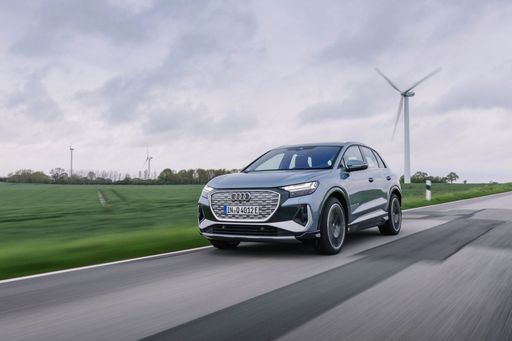 @ Audi AG
@ Audi AG
Audi Q4 e-tron
Costs and Consumption
View detailed analysis
Engine and Performance
View detailed analysis
Dimensions and Body
View detailed analysis
Audi Q4 e-tron
The Audi Q4 e-tron brings Audi polish into the electric crossover scene, pairing a sleek exterior with a refined, airy interior that makes everyday driving feel distinctly premium. It’s an easy-to-live-with EV that balances comfort and real-world usability with intuitive tech, making it a smart choice for buyers who want electric mobility without giving up Audi character — and yes, it still looks good in the driveway.
details @ Audi AG
@ Audi AG
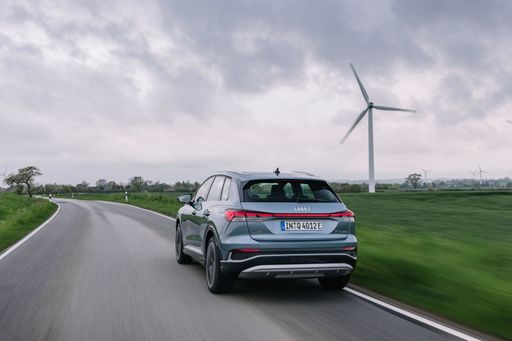 @ Audi AG
@ Audi AG
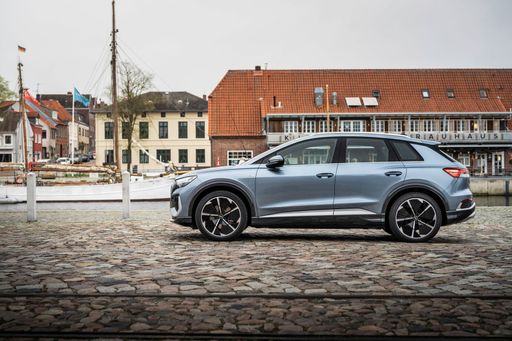 @ Audi AG
@ Audi AG
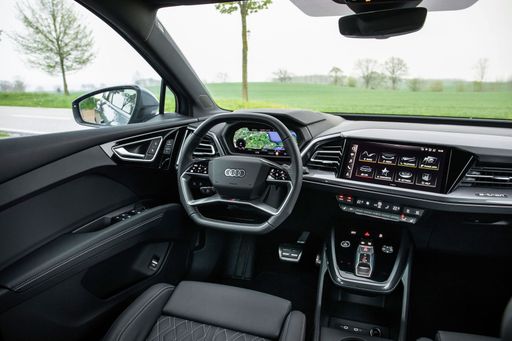 @ Audi AG
@ Audi AG
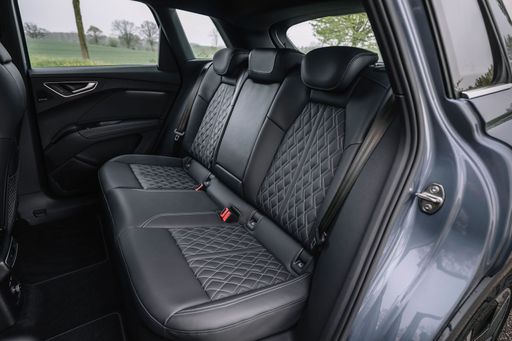 @ Audi AG
@ Audi AG
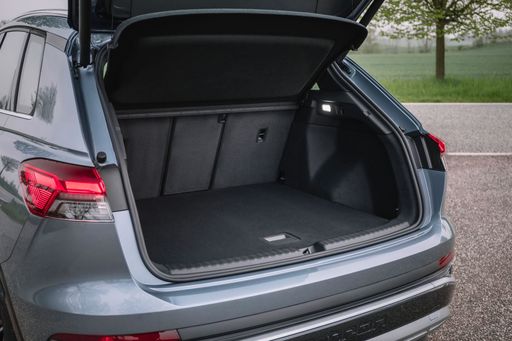 @ Audi AG
@ Audi AG
Jeep Compass
The Jeep Compass packs classic Jeep styling with a surprisingly composed demeanor, equally at home turning heads in the city or tackling a weekend dirt track. Inside it's a pragmatic, user-friendly compact SUV that prioritizes comfort and versatility — a smart pick if you want a dose of adventure without giving up everyday sense.
details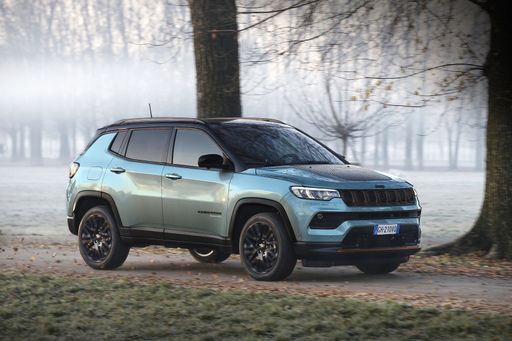 @ Jeep / Stellantis Media
@ Jeep / Stellantis Media
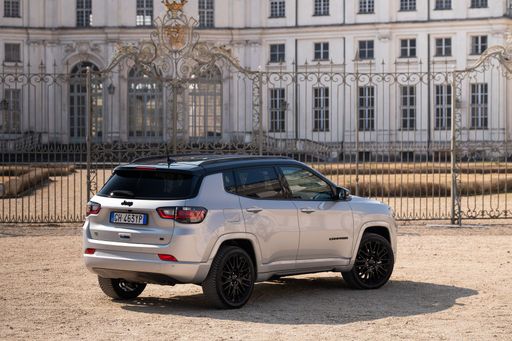 @ Jeep / Stellantis Media
@ Jeep / Stellantis Media
 @ Jeep / Stellantis Media
@ Jeep / Stellantis Media
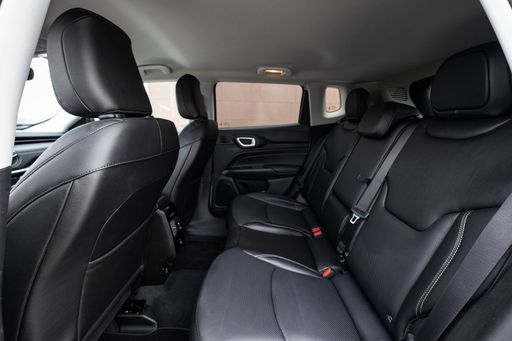 @ Jeep / Stellantis Media
@ Jeep / Stellantis Media
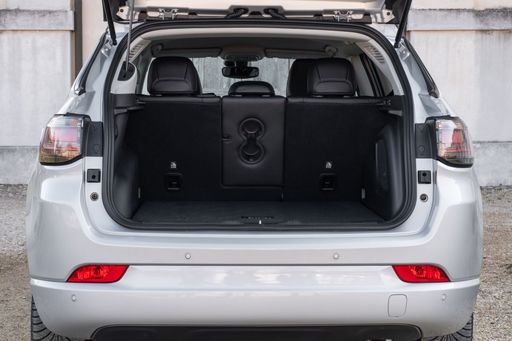 @ Jeep / Stellantis Media
@ Jeep / Stellantis Media
 @ Audi AG
@ Audi AG
|
 @ Jeep / Stellantis Media
@ Jeep / Stellantis Media
|
|
|
|
Costs and Consumption |
|
|---|---|
|
Price
39600 - 58800 £
|
Price
34200 - 43200 £
|
|
Consumption L/100km
-
|
Consumption L/100km
5.8 - 5.9 L
|
|
Consumption kWh/100km
15.9 - 17.4 kWh
|
Consumption kWh/100km
17.50 kWh
|
|
Electric Range
406 - 554 km
|
Electric Range
500 km
|
|
Battery Capacity
59 - 77 kWh
|
Battery Capacity
74 kWh
|
|
co2
0 g/km
|
co2
0 - 133 g/km
|
|
Fuel tank capacity
-
|
Fuel tank capacity
55 L
|
Dimensions and Body |
|
|---|---|
|
Body Type
SUV
|
Body Type
SUV
|
|
Seats
5
|
Seats
5
|
|
Doors
5
|
Doors
5
|
|
Curb weight
2035 - 2235 kg
|
Curb weight
1667 - 2198 kg
|
|
Trunk capacity
520 - 535 L
|
Trunk capacity
550 L
|
|
Length
4588 mm
|
Length
4552 mm
|
|
Width
1865 mm
|
Width
1928 mm
|
|
Height
1614 - 1632 mm
|
Height
1675 mm
|
|
Max trunk capacity
1460 - 1490 L
|
Max trunk capacity
1561 L
|
|
Payload
505 - 515 kg
|
Payload
-
|
Engine and Performance |
|
|---|---|
|
Engine Type
Electric
|
Engine Type
Petrol MHEV, Electric
|
|
Transmission
Automatic
|
Transmission
Automatic
|
|
Transmission Detail
Reduction Gearbox
|
Transmission Detail
Dual-Clutch Automatic, Reduction Gearbox
|
|
Drive Type
Rear-Wheel Drive, All-Wheel Drive
|
Drive Type
Front-Wheel Drive
|
|
Power HP
204 - 340 HP
|
Power HP
145 - 213 HP
|
|
Acceleration 0-100km/h
5.4 - 8.1 s
|
Acceleration 0-100km/h
8.5 - 10.3 s
|
|
Max Speed
160 - 180 km/h
|
Max Speed
180 - 188 km/h
|
|
Torque
310 - 679 Nm
|
Torque
230 - 345 Nm
|
|
Number of Cylinders
-
|
Number of Cylinders
3 - 4
|
|
Power kW
150 - 250 kW
|
Power kW
107 - 157 kW
|
|
Engine capacity
-
|
Engine capacity
1199 cm3
|
General |
|
|---|---|
|
Model Year
2023 - 2025
|
Model Year
2025
|
|
CO2 Efficiency Class
A
|
CO2 Efficiency Class
D, A
|
|
Brand
Audi
|
Brand
Jeep
|
What drive types are available for the Audi Q4 e-tron?
The Audi Q4 e-tron is offered with Rear-Wheel Drive or All-Wheel Drive.
The prices and data displayed are estimates based on German list prices and may vary by country. This information is not legally binding.
